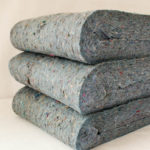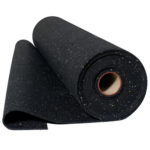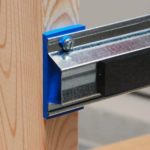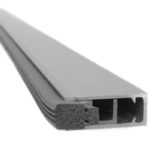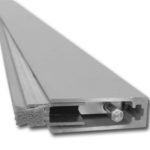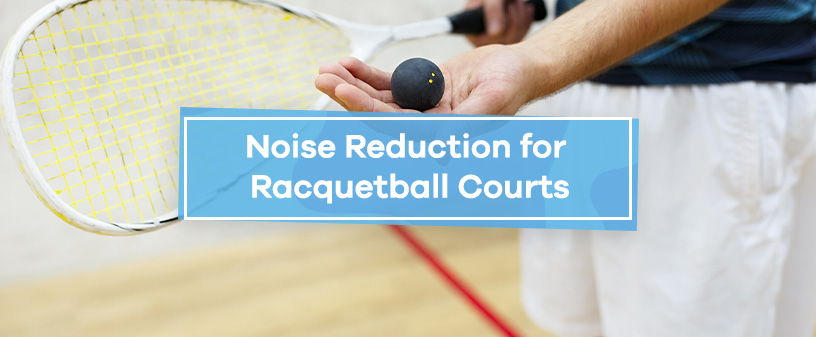
Racquetball is a great sport, but it can, well, make a racket. Racquetball courts are almost entirely made of surfaces that reflect sound. Fortunately, being indoors means you can reduce the noise with soundproofing and sound-absorbing materials.
Sources of Loud Racquetball Court Noise
You will hear many types of noise on a racquetball court. Impact noises are made by objects hitting each other, such as balls contacting floors, walls and rackets. When on the court, players might also hear airborne noise, or sounds that travel to them through the air, like players talking or loud shouts from the swimming pool in the next room over.
While it would take a lot of work to soundproof a racquetball court completely, you can significantly reduce the sound entering and leaving the court with various noise reduction methods.
Best Methods for Soundproofing Indoor Racquetball Courts
If you want to build a quieter racquetball court in a home, fitness center, or other building, you will need several soundproofing materials and strategies. Since you do not want to block the walls or ceilings with soundproofing items like hanging baffles or acoustic panels, focus on built-in elements to create soundproof racquetball courts. These solutions include:
Insulation
Soundproofing insulation can significantly reduce noise. It works like traditional building insulation — including the thermal benefits — but with noise reduction. Our Quiet Batt® soundproofing insulation uses cotton, a porous and fibrous material, to absorb sound energy. This material is particularly effective at reducing echoes, a hallmark of noisy racquetball courts.
You can use insulation in walls and ceilings to keep the noise contained during even the most lively gameplay.
Floor Underlayment
This sound-reducing floor layer goes between your subfloor and flooring material. It can reduce airborne and impact sounds to create a more pleasant experience. Soundproofing underlayment is especially useful if your indoor racquetball court is above or below another floor.
Construction Materials
There are various construction materials available to soundproof racquetball courts. A popular option is a sound isolation system, which can keep the noises made on the court from traveling throughout the building by isolating the surface of the wall from the framing.
You can also take steps to prevent exterior noises from entering the court. If your building has noisy elements near the court, like loud pipes or a furnace, you may want to add sound control to those sources. For instance, you can apply our solutions to reduce vibration-related noises, which include peel-and-stick materials and paint-on coatings.
Soundproofed Doors
A door without proper soundproofing could allow many sounds to seep into and out of your court. Some options for reducing noise around a door include:
- Soundproofing seals and sweeps: Door seals and sweeps cover the bottom and sides of the door with a dense material like rubber that dampens sound while still allowing the door to move. These products are ideal for creating full sound separation between the court and the rest of the building.
- Soundproofing kits: Soundproofing kits combine seals, sweeps, and door coverings for a heavy-duty sound-dampening solution. If you have a particularly noisy court or you have placed the space across from a loud area, full-door soundproofing is a good choice.
Limit Noise in Indoor Racquetball Courts With Soundproof Cow
Reducing noise in a racquetball court can make the game much easier on the ears of players and other building occupants. At Soundproof Cow, we strive to simplify soundproofing with quality products — whether you are building a court in a facility or your home. Chat with a pro today to discuss your project, or explore our soundproofing materials online!





